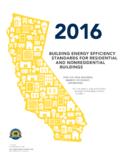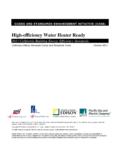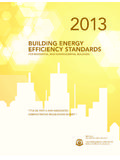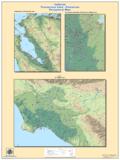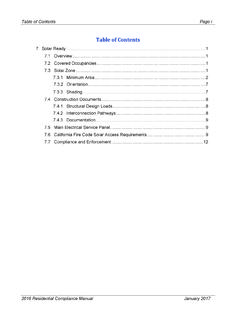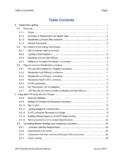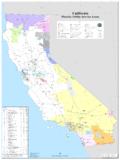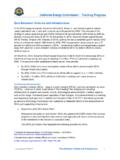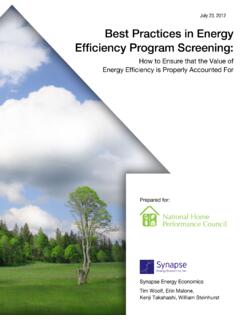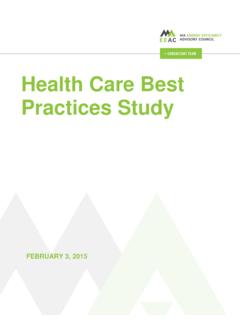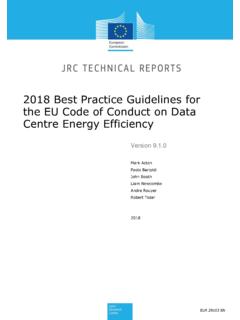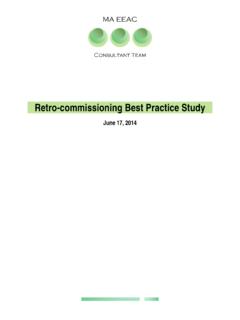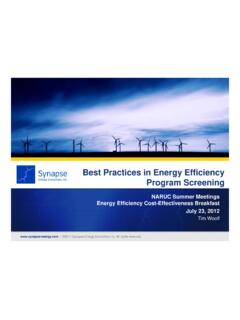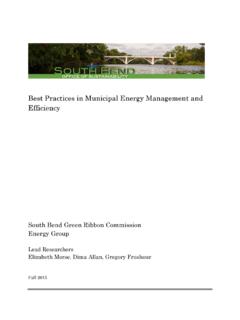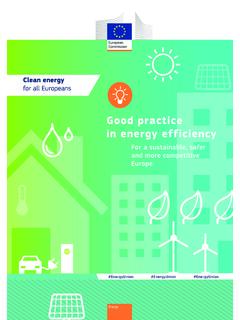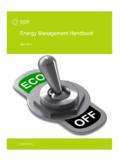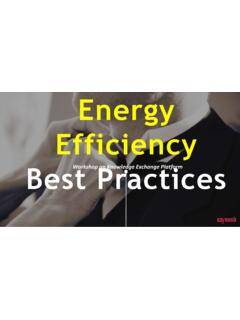Transcription of California’s Food Processing Industry Energy …
1 california Energy commission california s food Processing Industry Energy efficiency Initiative: Adoption of Industrial best practices STAFF REPORT JANUARY 2008 CEC 400-2008-006 Arnold Schwarzenegger, Governor california Energy commission Ricardo Am n Donald B. Kazama, PE Tony Wong, PE california Energy commission Rob Neenan california League of food Processors Principal Authors Ricardo Am n Project Manager John Sugar Manager Public Programs Valerie Hall Deputy Director efficiency and Renewable Energy Division Melissa Jones Executive Director DISCLAIMER This report was prepared by a california Energy commission staff person.
2 It does not necessarily represent the views of the Energy commission , its employees, or the State of california . The Energy commission , the State of california , its employees, contractors and subcontractors make no warrant, express or implied, and assume no legal liability for the information in this report; nor does any party represent that the uses of this information will not infringe upon privately owned rights. This report has not been approved or disapproved by the california Energy commission nor has the california Energy commission passed upon the accuracy or adequacy of the information in this report.
3 TABLE OF CONTENTS TABLE OF i v CHAPTER 1: food Industry Energy efficiency CHAPTER 2: Outreach Activities: Training and Technical CHAPTER 3: Industrial best practices Training CHAPTER 4: Technical Characteristics of BP CHAPTER 5: Energy System CHAPTER 6: food Processing Plant Assessment Summary CHAPTER 7: Lessons CHAPTER 8: Case APPENDIX A - Energy efficiency Products and APPENDIX B - Bibliography ..27 i ii ABSTRACT In partnership with the california League of food Processors, the california Energy commission encourages the adoption of industrial best practices to advance Energy efficiency in the food Processing Industry .
4 The partnership works with investor and publicly owned utilities to hold training workshops and support the delivery of Energy system assessments to their customers. These services encourage company managers to establish a corporate commitment to Energy efficiency . The adoption of best practices can generate significant Energy savings resulting in considerable cost savings to california s $50 billion food Processing Industry . KEYWORDS Energy efficiency , best practices , food Industry , food Processing , california Energy commission , california League of food Processors, training workshops, Energy systems assessments, steam systems, compressed air system, case studies.
5 Iii iv ACKNOWLEDGEMENTS Authors wish to thank Mike Maulhardt and Steve Lillie from Del Monte Foods, and Mike Oliver from Clougherty Packing, LLC for their support in writing the case studies for their respective companies. The principal author also appreciates the effort Kathy Duong provided supporting the production and creative arrangements of this publication. v vi CHAPTER 1: food Industry Energy efficiency Initiative Industry Background and Initiative Goals california s food Processing Industry generates over $50 billion in gross annual revenues, consuming more than 600 million therms of natural gas and over 3,700 million kilowatt hour, including the electricity used in refrigerated warehouses.
6 food Processing is the third largest industrial Energy user in the state. This report documents the efforts conducted and the achievements to date of the california food Industry Energy efficiency Initiative (Initiative). The Initiative is rooted in the efforts of the california Energy commission s ( Energy commission ) Process Energy Group in partnership with the california League of food Processors (CLFP), the state s investor owned utilities (IOUs) and Publicly Owned Utilities (POUs). The Initiative promotes corporate commitment to Energy efficiency through the products and services offered by the Energy commission , the Public Goods Charge (PGC) programs administered by the IOUs and independent efficiency programs sponsored by the POUs.
7 The CLFP encourages food Processing companies to actively participate in efficiency programs and take advantage of these services to obtain a return on their contribution to the PGC funds. For the purposes of this document: Industrial best practices (BP) refers to the products and services developed by the United States Department of Energy (DOE), Office of Industrial Technologies. Energy efficiency includes all activities related to the adoption of Energy - efficiency technologies and best management practices , such as demand reduction through conservation, productivity improvements, peak load reduction and shifting, heat recovery and Energy production.
8 The food Processing Industry refers to all activities that transform food and fiber crop production into storable products. For more details on BP, please visit: 1 2 CHAPTER 2: Outreach Activities: Training and Technical Assistance The Energy commission s Process Energy Group works closely with plant managers, executives and Industry representatives to continuously understand the needs of the food Processing Industry . Program offerings are tailored to address the Energy interests of the Industry through the following efforts: Funding of research, development, and demonstration projects Delivery of education and training workshops Providing on-site Energy system assessments Providing low-cost financing for Energy efficient emerging technologies The Initiative s highest priority is to advance an understanding of efficiency technologies among plant personnel who will transfer this knowledge into best practices at their company.
9 To achieve this goal, the Energy commission sponsors education and training BP workshops and conducts on-site Energy system assessments (ESAs). These products are designed to promote Energy efficiency practices to decision makers and system operators. Learning BP s through workshops provides workers with the tools to identify system inefficiencies. BP s also offer basic rules of thumb to help operators calculate system efficiencies and adopt practical Energy management practices to improve productivity. The ESA s offer a snap shot of system performance with recommendations to address short-term, low cost measures.
10 The ESA also identifies medium to long term opportunities that increase system efficiencies and achieve cost reductions. The Initiative encourages companies that schedule ESA s to send plant personnel to attend BP workshops and then participate in the ESA at their facility. Using this approach enhances plant personnel s ability to practice the BP theory in their own facilities. The combined effect of learning by doing should lead to sustained Energy efficiency practices by experienced Energy system operators. Since 2004, the Energy commission has, with grants from the DOE, offered these products and services to meet Industry needs.

